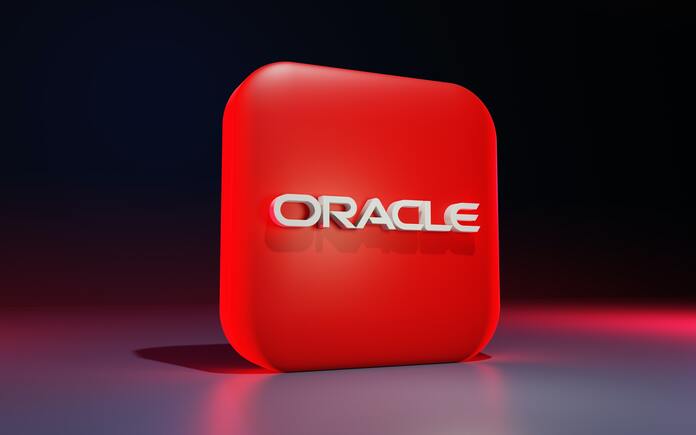Oracle Corporation (NASDAQ:ORCL) is poised to release its fiscal Q1 2025 results on September 9, and analysts are closely watching the company’s free cash flow (FCF) performance. The tech giant has consistently reported strong free cash flow, and this trend is expected to continue, powering its stock price upward. The Oracle free cash flow story is a key driver for investors, with expectations that it could be 15.5% undervalued, pushing the price target to over $161 per share.
Oracle’s rapid expansion into artificial intelligence (AI) markets, combined with its reliable cloud infrastructure, positions the company as a leader in selling cloud storage and data services to AI developers. This, coupled with Oracle’s own AI software, particularly in healthcare, is expected to boost its financial performance despite increased capital expenditures.
Strong Free Cash Flow Results Drive Stock Growth
In the past fiscal year, Oracle reported $11.8 billion in free cash flow, reflecting a 39% year-over-year (YoY) increase. Although this figure is slightly down from the previous quarter’s trailing 12-month (T12M) FCF of $12.36 billion, the decline is mainly due to higher capital expenditures. Nevertheless, Oracle managed to maintain an impressive FCF margin of 22.3%, generating $52.96 billion in revenue.
For fiscal 2025, analysts expect revenue to grow further. A survey of 29 analysts on Seeking Alpha projects Oracle’s revenue to hit $57.92 billion, up 9.36% YoY. Applying a 22.3% FCF margin to this revenue forecast results in an estimated $13.62 billion in free cash flow, representing a 15.35% increase from the trailing $11.8 billion.
If Oracle delivers strong FCF results in the upcoming report, it would reinforce expectations of steady cash flow growth and bolster confidence in the stock’s upward trajectory.
Oracle’s AI Strategy: A Key to Growth
Oracle has embraced AI as a significant growth driver. The company is essentially providing the “shovels” to the “miners” of the AI revolution by offering critical cloud infrastructure to AI developers. In addition, Oracle’s AI software offerings, particularly in the healthcare sector, further diversify its revenue streams.
Oracle’s strategic shift into AI is expected to contribute significantly to the company’s financial performance, providing additional revenue streams and maintaining consistent FCF despite the elevated capital expenditures involved in expanding its cloud and AI infrastructure.
Price Target: Oracle Stock Could Rise 15%
Oracle’s solid free cash flow performance sets the stage for a potential increase in its stock price. Analysts forecast that if Oracle maintains its 22.3% FCF margin, the company could generate $13.62 billion in free cash flow over the next 12 months. Using a 3.0% FCF yield, which reflects the market’s current valuation of Oracle stock, Oracle’s market cap could rise to $454 billion (i.e., $13.62 billion / 0.03).
At its current market cap of $393 billion, this would represent a 15.5% upside, suggesting Oracle stock could reach $161.29 per share. This growth is significant for long-term investors, and the anticipated FCF results in the upcoming earnings report could act as a catalyst for this increase.
Shorting Out-of-the-Money Puts for Extra Income
For investors looking to capitalize on Oracle’s stable free cash flow while generating extra income, selling short out-of-the-money (OTM) put options can be a profitable strategy. For example, selling OTM puts at the $130 strike price for the September 27 expiration could yield $2.55 per contract, or a 1.96% return for just three weeks.
Here’s how it works: an investor would secure $13,000 to potentially purchase 100 shares of Oracle stock at $130. If Oracle’s stock remains above $130 by expiration, the investor keeps the premium earned from selling the put. If the stock falls to or below $130, the investor would be required to buy 100 shares at a discounted price, while still keeping the premium.
By repeating this trade over several weeks, an investor could generate additional income while maintaining the flexibility to buy Oracle stock at a lower price point. Over the next quarter, this strategy could yield more than $1,000 in premiums, enhancing returns while minimizing risk.
Conclusion: Oracle Stock Positioned for Long-Term Growth
With expectations of strong Oracle free cash flow results in fiscal Q1 2025, the company is well-positioned for continued growth. Oracle’s investments in AI and cloud infrastructure are likely to sustain its strong cash flow margins, offering potential for a 15% stock price increase in the coming months.
For existing investors, holding onto Oracle shares seems prudent, given the solid fundamentals and potential for further gains. For those looking to add Oracle to their portfolio, selling OTM put options could provide a strategic entry point, allowing for extra income and a possible discounted stock purchase.
In summary, Oracle’s focus on free cash flow, coupled with its expansion into AI, makes it a compelling investment opportunity in today’s market.
Featured Image: Unsplash









